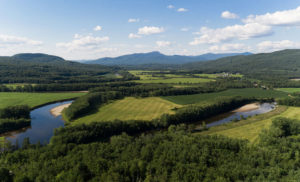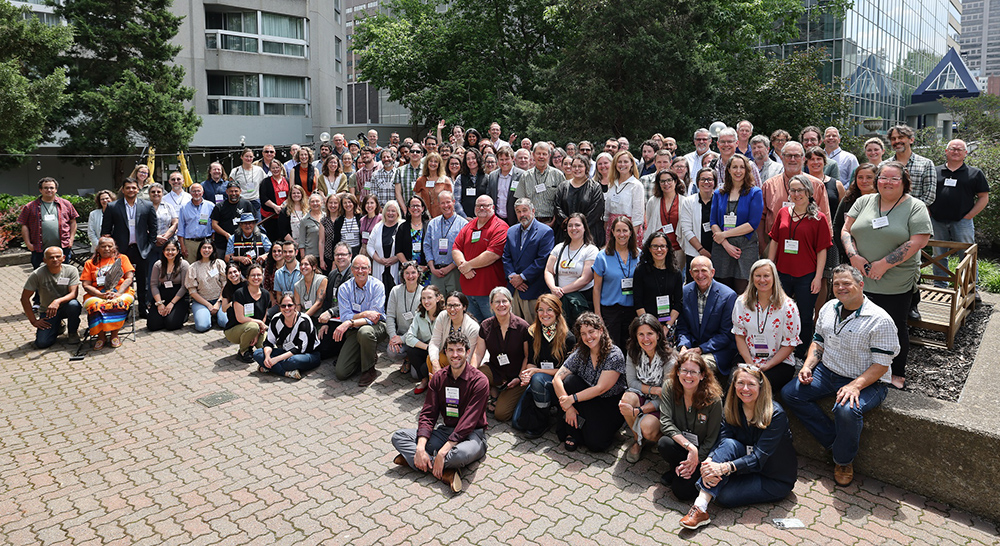Mikael Cetjin, SCI Regional Coordinator“There certainly needs to be more action at the larger scale, but some of the biggest needs and opportunities are at the local level.”
When it comes to the Staying Connected Initiative, the “think globally, act locally” motto fits.

An international partnership with more than 70 partner organizations, the Staying Connected Initiative, or SCI, works to conserve and restore landscape connectivity across the roughly 80-million-acre Northern Appalachian-Acadian region of the northeastern United States and southeastern Canada. The cross-border coalition, which spans six states and three provinces, involves a breadth of stakeholders, from local communities and land trusts to state and federal wildlife and transportation agencies. The results are adding up, says The Nature Conservancy’s Mikael Cejtin, SCI regional coordinator.
“We work with a lot of different partners at multiple scales,” he says. “We find as many opportunities as we can to leverage and support the work of organizations that are already out there doing the work on the ground.” While The Nature Conservancy (TNC) is the primary fiscal sponsor and coordinator of SCI, the partnership is supported and co-led by multiple partners who contribute funding and staff time.

With the devastating impacts of a warming planet and biodiversity loss becoming ever more apparent, individuals can often feel impotent and frustrated. But within a coalition like SCI and the many Regional Conservation Partnerships (RCPs) working at smaller scales, the average person can have the biggest impact by going local, Cejtin says. The actions of both community-based and regional land trusts working with municipal land-use boards all add up to meaningful impacts for wildlife and our future.
“The challenges are huge. There certainly needs to be more action at the larger scale, but some of the biggest needs and opportunities are at the local level,” he says. “I work on a local conservation commission; so many important decisions are made at that scale. It’s where the rubber meets the road.”
It can be hard for people to wrap their minds around something as complex as global climate change. “It is important and usually easier to engage people around what matters to them locally,” Cejtin says. Yet SCI’s goal is also to “inspire communities to see themselves as part of a bigger network and vision.” One step above conservation commissions and below the much larger SCI, RCPs help local boards and land trusts coordinate their activities for wider impact.
The Berkshire Wildlife Linkage Partnership, for example, covers the Green Mountains to Hudson Highlands Linkage, an SCI priority linkage area for continental-scale connectivity for one of the most complex and varied habitats in southern New England. This interstate, interconnected, and sparsely developed region is “an irreplaceable link in the Appalachian Mountain chain of the Eastern United States,” according to TNC’s website. SCI partners have been working with municipalities and regional planning organizations within the Berkshire Wildlife Linkage Partnership to obtain competitive federal funding to repair and replace undersized culverts so that both water and wildlife can better pass safely.
Cejtin says these are long term cost-saving measures for communities. “People see the storms getting worse; they see all the flooding happening. We need to speak the language of economics and insurance.”
It is vital for conservationists to show communities that conservation can help solve the real-world problems they are facing. “Intact forests provide free water purification, free air conditioning, and downstream protection from flooding and erosion,” Cejtin says. Rural communities across the region also depend on unfragmented forests and connected habitat for hunting, fishing, forestry, and outdoor recreation-based tourism.
SCI partners also seek to help fulfill “30X30” policy commitments to protect and steward 30% of lands and waters by the year 2030 at different scales and in different landscapes. Cejtin says that securing connected networks of habitat and protected areas is critical for biodiversity conservation and climate adaptation in urban to rural landscapes, and that the urgency to act is now. Heeding their own call to action, this past June, SCI and its partners convened a landscape connectivity “summit” that drew high-level attention and many enthusiastic attendees.
While some species like moose and lynx need big, wild landscapes to survive, many other species, like turtles and salamanders, require habitat connections on a smaller scale and some wildlife can travel through more developed areas. “We need connected landscapes on multiple scales,” says Cejtin. “Even if you live in New Haven, Conn., your forests ultimately connect to these linkages. You’re still contributing to this larger vision. The beauty of connectivity is that it naturally makes you think of how your land connects with the neighbor’s land, the neighboring town’s land, and so on. Everything that everyone’s doing everywhere does make a difference.”
The SCI website provides resources to assist its member RCPs and others, including a library, technical and scientific documents, sample zoning language, story maps, and case studies featuring examples of completed partner projects to enhance connectivity at both local and regional scales.
For more information about the Staying Connected Initiative, contact Mikael Cejtin at mikael.cejtin@tnc.org.